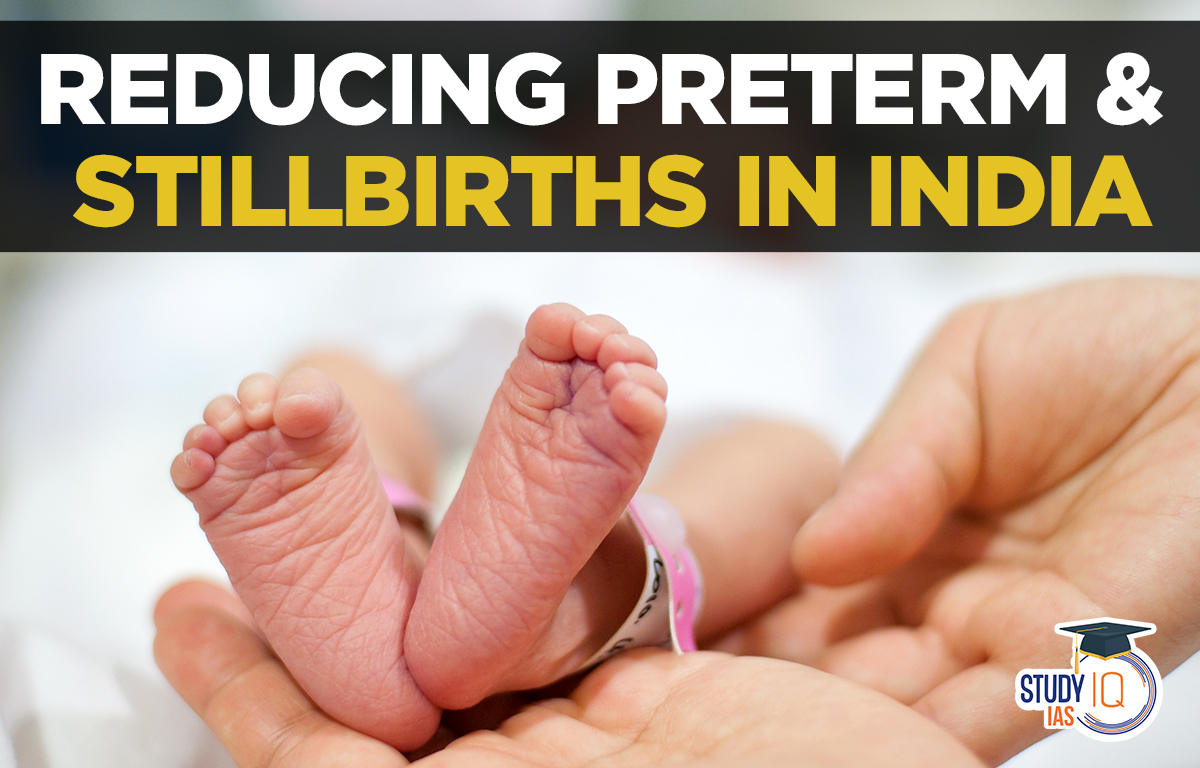Table of Contents
More on Reducing Preterm and Stillbirths in India
- The United Nations Inter-agency Group for Child Mortality Estimation (UNIGME) report on child mortality — estimates that globally, five million children died before their fifth birthday (under-five mortality) in 2021.
- India’s share: Under-five deaths were estimated at 7,09,366; infant deaths (death before first birthday) at 5,86,787; and 4,41,801 neonatal deaths. The majority of these deaths were preventable.
- These numbers showed wide inter-State variations in child mortality. The mortality of children in rural parts in any age subgroup was higher than their urban counterparts.
Neglected Challenges of Child Mortality
- The higher number of both preterm births and stillbirths is responsible for driving neonatal, infant and child mortalities upwards in India.
- Preterm births: These are the children born alive before the completion of 37 weeks of pregnancy. They are two to four times at higher risk of death after birth in comparison to those born after 37 weeks of gestation.
- One in every six to seven births is preterm in India. The high burden of preterm births means newborns in the country are at greater risk of complications and mortality.
- According to studies, preterm births contribute to one in every six under-five child deaths in the country. However, three out of every four deaths due to preterm birth-related complications are preventable.
- Stillbirths: A baby, who dies after 22 weeks of pregnancy, but before or during the birth, is classified as a stillborn.
- In 2021, the absolute estimated number of stillbirths in India was greater than the death amongst children in 1-59 months of age.
- Mains reason: One of the main reasons preterm births and stillbirths do not get due attention is the lack of reliable data.
- While countries have strengthened the mechanisms for tracking child mortality, the data on stillbirths and preterm births are scarce.
Possible Solutions to Tackle the Problem
- Quality of health services: The majority of stillbirths and preterm births can be prevented by scaling up proven interventions and improving the quality of health services across vulnerable areas.
- Monitoring labour and functional referral linkages can help in preventing stillbirths.
- Counselling and guidance: There is a need to increase access to family planning services, and improve antepartum services (health and nutrition).
- Identify risk factors: There is a need to identify risk factors in mothers such as diabetes, hypertension, obesity and infections.
- Surveillance guidelines on maternal and perinatal deaths need to be effectively implemented.
- Advanced healthcare: Preterm babies must be provided Kangaroo mother care apart from technological support in form of incubators.
- Recording of data: Interventions can be best delivered if the data on preterm births and stillbirths are recorded and reported in a better way.
- Identifying vulnerable areas: There is a need to identify the hot spot clusters of stillbirths and preterm births for local and targeted interventions.
Way Forward
- Policy tweaks: Under the National Health Policy of 2017, the government had committed to investing 2.5% of the GDP in health by 2025.
- Six years since then, the allocation for health has marginally increased. It is among the lowest in the world.
- Increasing funding: The primary healthcare system is underfunded, and superficial changes are not enough to improve health outcomes.
- Children and pregnant women continue to die from preventable causes. Inequities in health outcomes are borne by the poorest and marginalized families.
- Structural gaps in the public healthcare sector can only be filled through increased budgetary funding.


 Question Hour in Parliament: Meaning, Ty...
Question Hour in Parliament: Meaning, Ty...
 Daily Quiz 18 July 2025
Daily Quiz 18 July 2025





















